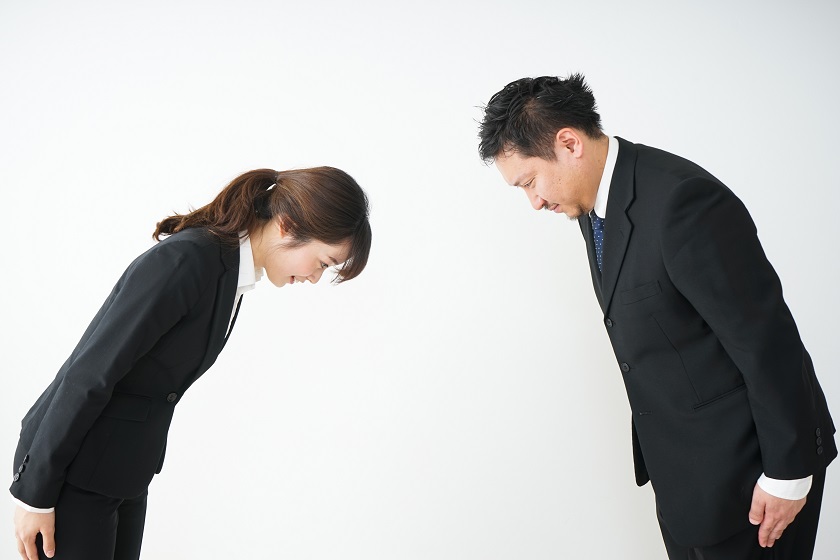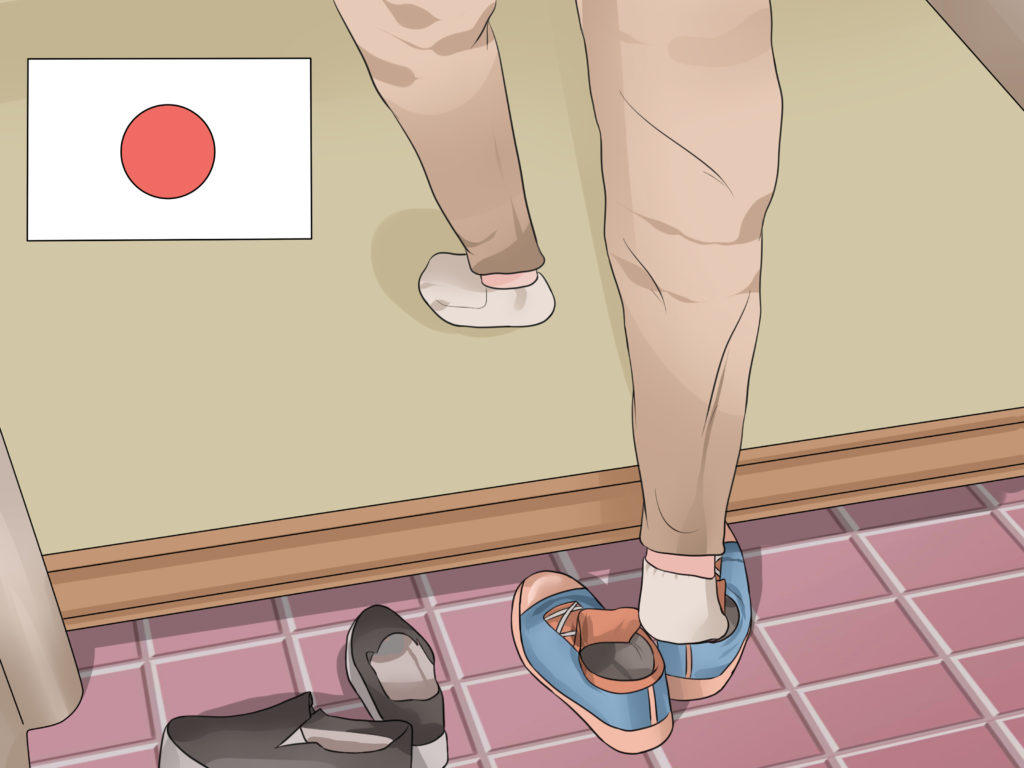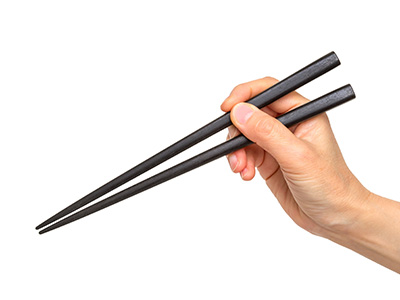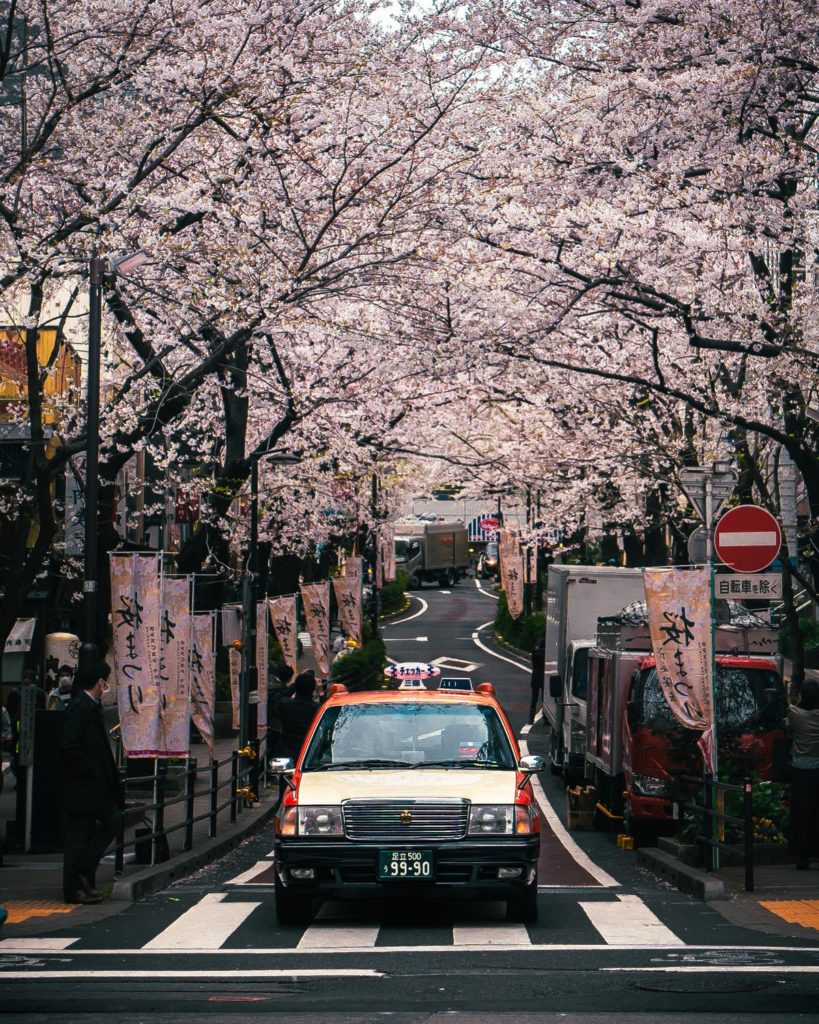Japan is known for its warm hospitality, manners, and unique culture, but its unique customs and values can often catch a newcomer by surprise.
Whether you’re planning to visit Japan for a vacation or a long term stay, familiarising yourself with some basic Japanese manners and etiquettes will make your stay a comfortable and memorable one.
From the basic local greetings to table manners, we’ve prepared a quick guide for you to blend in with the locals and not creating a faux-pas :
1. Learn commonly used Japanese phrases

While it might take some time for you to master the Japanese language and manners, learning a few basic words will go a long way and also make the locals around you appreciate your efforts in knowing their culture.
Some useful phrases to make your daily life smooth in Japan are:
Su-mi-ma-sen – Excuse me
A-ri-ga-tō – Thank you
Kon’nichiwa – Hello
Hai – Yes
Kam-pai – Cheers
O-negai shimasu – Please
Eigo o hanasemasu ka – Do you speak English?
2. Bow your way to respect

In Japan, bowing is a polite way to greet each other. If you’re meeting someone for the first time, you will be greeted by a bow – either a casual shorter nod of the head or a deep bow to the waist. However, don’t offer your hand for a shake unless the other person offers it first.
Usually, a slight nod is sufficient to greet someone as the Japanese people understand that foreigners are not familiar with bowing rules. But don’t make a fool of yourself by bowing and shaking hands at the same time, or bowing and keeping a hand on your chest or palms together like ‘namaste’.
3. No Tips, please
While the tipping culture is prominent in many countries, it is not expected, and at times considered rude in Japan.
If you end up leaving cash behind at a restaurant or forget to take the leftover change at a supermarket, you would find someone from the staff running behind you to return the money. So, as a courtesy, you should say “arigato” when you pay the bill and take all the remaining change with you.
4. Be on time

Punctuality is a habit Japanese people take very seriously. Whether you’re meeting someone casually or at a formal set-up, make sure you arrive right at the time or a little before. However, at some jobs, arriving on time is considered late!
If you’re running late due to a train delay, traffic, or some mishappening, it’s always best to inform the person you are meeting by a text or a call, and they’ll be understanding towards it. However, showing up much earlier or later than expected without informing might put your host in an uncomfortable situation.
5. Keep it clean
Japan is known for its cleanliness as people here believe in the mantra “cleanliness is godliness.” Therefore, even though you don’t see any trash cans in public areas, the surroundings would still be clean as people store their trash in their bags and dispose of it later responsibly.
Also, eating or drinking while walking on the roads or in the subway is considered impolite. Convenience stores and street vendors usually have a designated space for you to consume your food, while vending machines always have a trash bin next to it to discard any waste.
6. Remove your shoes

If you’re visiting someone’s home in Japan, you would have to remove your shoes at the entrance and arrange them so that it’s easier for you to wear them before you leave.
It is recommended that you wear socks if you don’t want to be barefoot and bother the hosts with dirty feet. Many tea-houses, museums, and restaurants might also have a no-shoe policy, so it’s always best to check their policy before your visit.
7. Don’t be loud
If you’re traveling by public transport – whether a bus or the shinkansen – make sure your phones are on silent mode. Talking loudly over the phone in public areas is generally frowned upon and should be avoided. If you still have to attend an important call, it’s better to move to a less crowded area and try to keep the call as short as possible.
Also, at home, keep your TV or music player volume to the minimum, or else you will have neighbors complaining about the loud noise to the building authorities or the local koban (police box).
8. Leave your umbrella outside
You’ll often find small racks outside any convenience store, restaurants, or shops to keep your wet umbrella before you enter the premises.
If you don’t want to leave your umbrella outside, use the umbrella bag dispenser to make it drip-proof and carry it with you; as you don’t want a dripping umbrella to make the indoors messy. Many office and apartment buildings also have umbrella dry-pads that let you swipe your umbrellas dry.
9. Careful with the chopsticks

If you’ve been to Japan before, you would know that Japanese people eat food using chopsticks. While there are various do’s and dont’s to keep in mind when using chopsticks, here are a few that you should know by heart :
Hold your chopsticks the right way, and do not play around with the chopsticks as it’s considered rude and childish. If you don’t know how to eat with chopsticks, check with the waiter if they can provide you a fork.
Also, it is bad manners to use your chopsticks to pass food to others’ chopsticks, as it’s reserved for funeral practices. Instead, you can place it on the edge of the plate and let the other person pick it themselves.
Hold your bowl of rice or miso soup in one hand and the chopsticks on the other hand while eating.
When you’ve finished your meal, place the chopsticks on the hashioki (chopstick rest) or put them horizontally across a plate.
10. Taxi
Catching a taxi in Japan is relatively simple, and you can easily recognize a taxi with its green license plates.
A vacant taxi will show a red sign(空車’ kuusha’) on its dashboard, while an occupied taxi will have the sign turned green (賃走 (“chinso”).

There are taxi stands (with a visible taxi stop sign) in the public areas so you can wait there to hail a taxi or flag one down in a safe area. The taxi doors open automatically on their rear left (while boarding and deboarding), so don’t try to manually open or close the taxi door as it might confuse the driver.
It’s always best to have the address in Japanese written down or saved on the Google map to make it easier for the taxi driver to locate the place. Most local taxis accept cash as well as credit card payment, and tipping is not expected.
Japanese manners can be challening to learn, but hopefully these few tips will make your stay in Japan a little easier. Don’t forget to smile and be polite, and you will be surprised by the warmth and kindness Japan has to offer.




Loading…